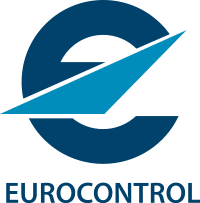(non-exhaustive list)
 Time-Based Separation (TBS)
Time-Based Separation (TBS)
The Time-Based Separation (TBS) concept consists in applying time spacing, instead of distance spacing, between aircraft in strong wind conditions. Strong headwinds reduce aircraft ground speed during approach, which decreases the landing rate of an airport. The key principle of the TBS concept is to define the distance separation to apply as a function of headwind, so as to maintain the time separation as observed in low headwind conditions, and consequently maintain the landing rate. WaPT supported EUROCONTROL in the development of the TBS safety case and of the TBS guidance materials. Our work mainly consisted in assessing TBS-related wake vortex encounter risk, assessing wind forecast requirements and supporting the development of the Air Traffic Control (ATC) separation delivery tool required for TBS application. TBS is in operation at London-Heathrow and Amsterdam-Schipol airports.
![]() Wind Turbine Wake Impact on Aircraft Operations
Wind Turbine Wake Impact on Aircraft Operations
WaPT was contracted by ENGIE-Electrabel to assess the impact, of the wake turbulence induced by wind turbines to be installed in different sites in Belgium, on aircraft operating in the vicinity. These local aerodynamic studies were required by the Belgian regulation authority (DGLV/DGTA). WaPT performed those studies based on VPM4WIND simulation results in collaboration with Laborelec (ENGIE Group, Belgium) and presented the results to DGLV/DGTA.
 RECAT-EU-PWS
RECAT-EU-PWS
RECAT-EU-PWS is the next European solution for wake turbulence categorisation and separation minima, developed by EUROCONTROL. It consists in establishing a static "pair-wise separation" (PWS) regime for approach and departure, where each aircraft type pair has its appropriate wake turbulence separation minimum (valid for any ambient weather conditions). The RECAT-EU-PWS solution then allows the application of a full pair-wise separation scheme or of a locally-optimised wake category scheme, depending on specific airport characteristics. RECAT-EU-PWS was developed in the framework of the Single European Sky ATM Research (SESAR) Programme. WaPT supported EUROCONTROL in the development and the validation of the RECAT-EU-PWS proposal. Our work concerned wake, weather and traffic data analysis, wake separation minima determination and associated wake vortex encounter risk assessment, also using WAKE4D simulations. This also led to several common publications, including the RECAT-EU-PWS Safety Case that is now under review by the European Aviation Safety Agency (EASA). PWS is in operation at London-Heathrow airport since December 2024.
 RECAT-EU
RECAT-EU
RECAT-EU is the European aircraft wake vortex recategorisation. It consists in a revision of current ICAO provisions for wake turbulence separation minima on approach and departure, leading to a proposed 6-category separation scheme, as opposed to the ICAO 3-category scheme. The RECAT-EU proposal was developed by the European Organization for the Safety of Air Navigation (EUROCONTROL) and is supported by a safety case. After reviewing this safety case, the European Aviation Safety Agency (EASA) confirmed that the RECAT-EU separation scheme can be used as a basis to update current schemes. WaPT and UCL supported EUROCONTROL in the development and validation of the RECAT-EU concept, in particular for wake data analysis and wake vortex encounter severity characterisation. RECAT-EU is now deployed at Paris-Charles de Gaulle, Paris-Le Bourget, Barcelona, London-Heathrow and Amsterdam-Schipol airports. The European wake vortex recategorisation (RECAT-EU) implemented at Paris-CDG and Le Bourget airports was the winner of the 2018 IHS Jane’s ATC Awards in the “Environment” category.
![]() Wake-Independent Departure and Arrival Operations (WIDAO) at Paris-CDG airport
Wake-Independent Departure and Arrival Operations (WIDAO) at Paris-CDG airport
Paris-Charles de Gaulle (CDG) airport operates four runways organised in two Closely Spaced Parallel Runway (CSPR) pairs (with typically external runway used for landing and internal runway for take-off). In 2007, DSNA (Direction des Services de la Navigation Aérienne) requested EUROCONTROL support to investigate whether independent segregated mode operations on CSPR could be performed with acceptable levels of safety. EUROCONTROL then performed an extensive LiDAR wake measurement campaign allowing relaxation of some separation constraints. Because of the range of airspace to be covered for collecting the required data in order to support the relaxation of all constraints, the decision was made to base the safety assessment of some constraint relaxations on the use of the WAKE4D software. The WIDAO concept was accepted by DGAC (Direction Générale de l'Aviation Civile) in 2010, based on the analysis of the LiDAR measurements complemented by the WAKE4D simulation results. It is now in operation at Paris-CDG airport. In 2016, WaPT performed a WAKE4D-based study to support the extension of the WIDAO concept to RECAT-EU CAT-S aircraft type (e.g., A380) operations.
